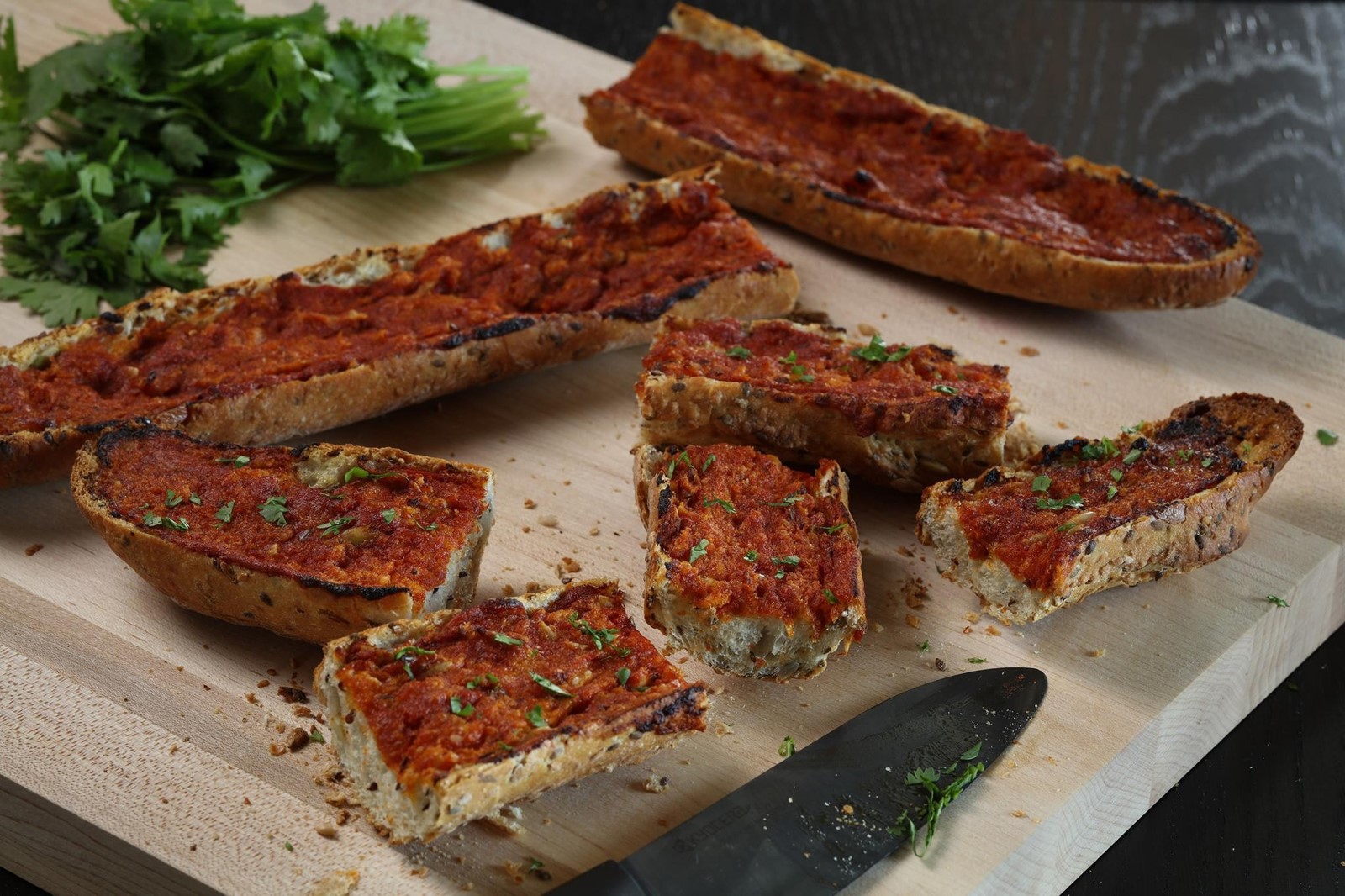Homemade harissa sauce sparks ordinary chicken


We grill several nights a week for the better part of six months a year. To keep things fresh, I employ a variety of spice rubs, marinades, barbecue sauces and basting sauces. Lately, a spicy red harissa sauce finds its way onto everything I want to grill, from chicken and fish to pork chops and eggplant.
I’ve made numerous harissa sauces since my days as a test cook at Cuisine magazine. For one issue, we explored the flavors of Morocco. My affection for this highly aromatic cuisine never wavers — there are always preserved lemons in my refrigerator, orange and rose water in the pantry, and seasoning blends in the drawer. I usually stock several versions of harissa in jars in the fridge.
Like salsa or chimichurri, harissa proves a great condiment to serve alongside grilled meats and vegetables. Harissa, says Robert Carrier in his classic cookbook “A Taste of Morocco” (published in 1987), is a “fiery condiment based on hot red peppers, olive oil and garlic, common to … Morocco, Tunisia and Algeria.”
Harissa also can be added to stews and soups and to flavor couscous and other grain side dishes. It enlivens scrambled eggs, sandwiches and green salads.
I like the simple combination of olive oil, garlic and spices from Cuisine magazine to use as a condiment. An adapted version of the recipe follows here; a high-speed blender will do the best job of crushing the seeds. My 2019 version gets enriched with fire-roasted red bell peppers, which add body along with a hint of sweetness. I’ve had good results with several dried, mild red chile options in the sauce, including Korean gochugaru, sweet imported paprika and ground New Mexico chiles.
When harissa is destined for marinating meats and poultry, I add a touch of Greek yogurt for tang. If I’m serving the harissa as a condiment, I skip the yogurt and reduce the fresh garlic a bit so it’s not overpowering. (I must confess that in a time crunch, I doctor store-bought harissa with yogurt, tomato paste and olive oil.)
My harissa seasoning sauce adds terrific flavor for marinating chicken, pork, turkey and lamb. Marinate poultry or meat for at least 2 hours (or up to 24 hours for bone-in cuts) so the flavors permeate nicely.
For the juiciest grilled chicken, I prefer to use chicken parts with their bones and skin intact. For the most attractive presentation, cook split chicken; cut small (3 to 4 pound) chickens in half through the breastbone, then cut out the backbone to create two half pieces.
Use a charcoal grill fired with hardwood charcoal and a few wood chips to add a smoky flavor that beautifully complements the harissa. If using a gas grill, add a packet of soaked wood chips over the burner. Then grill with the marinade still clinging to the meat, over medium to medium-low heat to keep things moist and to prevent burning.
To accompany grilled chicken, I serve toasted bread spread with the harissa and a quick-cooking couscous topped with caramelized red onions, raisins and broccoli. Of course, pass the harissa sauce.


 PREVIOUS ARTICLE
PREVIOUS ARTICLE
